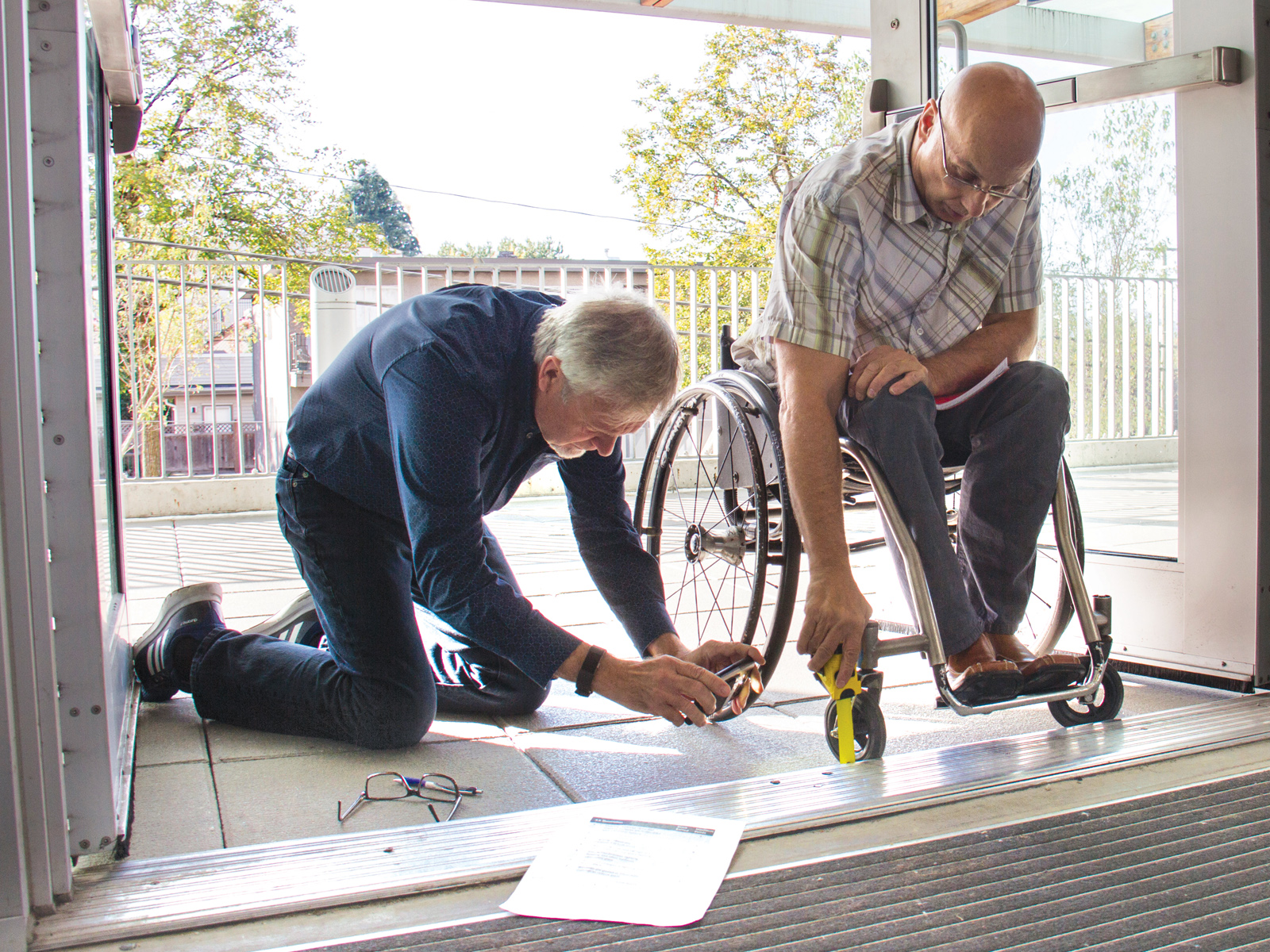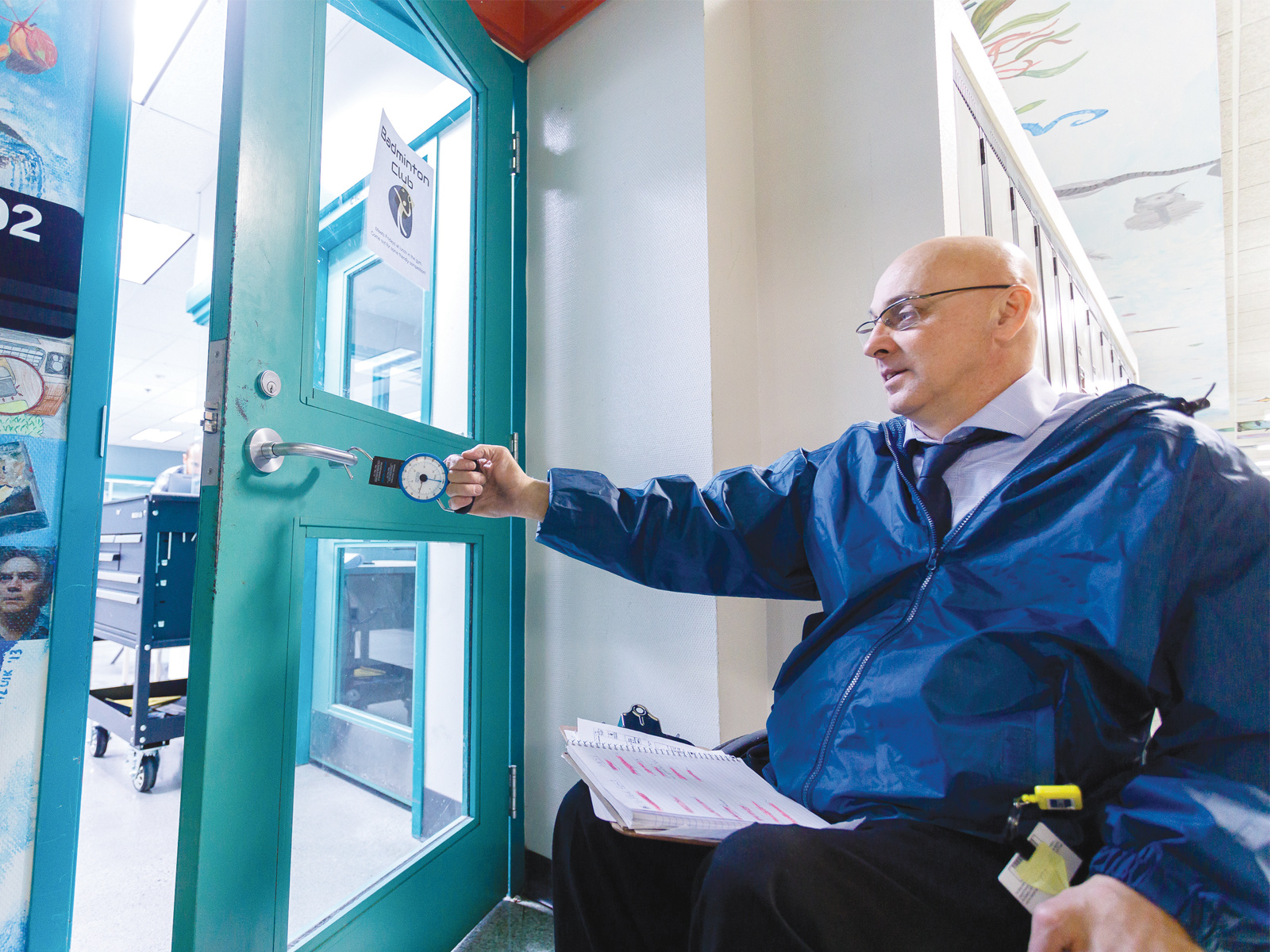It would be difficult to find anyone who would disagree with the idea of ensuring our communities are designed to accommodate users of all ages and abilities. But how can we make that happen?
By Brad McCannell
Education is the key to making the cultural shift needed to move from a code minimum access approach, to developing site specific access strategies that meet the real needs of the whole community. And to do it as part of the normal design and development process, not something added later as if it were landscaping.
In 2019, the Accessible Canada Act mandated federal buildings and businesses be accessible. Provinces such as British Columbia and Saskatchewan have followed suit by aligning their accessibility regulations closely to the new Federal requirements. This is a good thing. By actively addressing barriers in the built environment, we create a more inclusive and equitable Canada. Without meaningful access in the overall built environment, none of the other pillars of disability such as employment, communications, web access, transportation, etc., can thrive. The need for accessible transportation will be diminished if there are no accessible destinations. Even the most robust employment equity program will fail if people with disabilities cannot get into the building.
Consider the statistics: According to the latest Statistics Canada data, 27% of Canadian adults live with a disability. Further, it’s crucial to recognize that accessibility isn’t just about those individuals. It extends to their partners, friends, and family because like most people, we engage in social activities as a group. One individual with a disability affects the access requirements for everyone in the group. According to the Conference Board of Canada, our segment of the population commands a whopping $538.5 billion in disposable income. It is no wonder that the majority of Canadians (78%) believe there should be a national standard of accessibility, according to the Angus Reid Institute.
Meaningful accessibility
Informed design doesn’t rely on the traditional approach of using 18 to 55-year-old males as the baseline for any range of motion or reach requirements. Instead, it recognizes the changing demographics of our communities and reflects the broader principles of universal design. It’s not complicated. Nor is it expensive at the planning stage. It’s not design for people with disabilities—it’s just better design for everyone.
Meaningful access refers to the whole experience of the user while on site—not just the washrooms or the elevators. It’s the accessibility provided from the moment a person parks their car, gets off a bus, or just comes in from the street. Whether using the building as a customer or using the building as an employee, it is the measure of the holistic experience of the user, whatever their abilities. Meaningful access is the outcome of informed design.
There is far more to being accessible than slapping a wheelchair ramp on the side of a building; it’s about understanding the nuances of the spectrum of disability and how considering accessibility can fit seamlessly—and artfully—into design. Industry needs trained professionals delivering solutions on a large scale. But first, we needed a baseline. We needed a simple tool that revealed what was already there because after all, how can you fix something, if you don’t know, it’s broken?
Equally important though, was that the tool had to create common language and common methodology, that is rooted in standardized training—all with the direct input from the community of people disabilities. Unless we were all doing the same thing in the same way, the outcomes cannot be measured externally nor effectively compared within portfolios or across provinces.
Recognizing this need, the Rick Hansen Foundation launched its Accessibility Certification program (or RHFAC) in 2017. More than a checklist, RHFAC is a weighted scale that provides organizations with an overview of their current level of accessibility and a road map of how to improve going forward. This program, designed with input from industry leaders, technical experts and people with lived experience, is revolutionizing the relationship between accessibility and the built environment. Not intended to simply churn out new ‘access consultants’, RHFAC Training is a way of helping existing industry professionals understand their impact on our community and take the simple steps toward inclusion.

Almost 2,000 buildings nationally and internationally have been rated using RHFAC methodology. Several sites have achieved the highest rating of Gold including the CN Tower in Ontario, Peggy’s Cove in Nova Scotia, and LaGuardia Airport Terminal B in New Jersey, the first RHFAC Gold rating in the United States.
The heart of the program is RHFAC Training. A robust professional development course that helps owners/operators, architects, planners, and other industry professionals understand the real needs of people with disabilities in the built environment by measuring the accessibility of both existing and pre-construction plans, and going beyond code minimums. Students successful in the training are encouraged to take a 3rd party exam to become RHFAC Professionals, designated to conduct ratings. Using the RHFAC rating survey as a cross-disability lens over virtually any project, RHFAC Professionals can rate spaces from a human-centered accessibility perspective.
Due to increasing demand, the Rick Hansen Foundation (RHF), thanks in part to funding from the Government of Canada’s Sectoral Initiatives Program, is adding more courses to its programming in recognition of the fact that introducing the concept of accessibility can serve as a gateway to a more inclusive and accessible country. Understanding the fundamentals of creating spaces that cater to diverse needs is akin to holding a universal key that unlocks doors for everyone, regardless of ability. It also helps unlock the return-on-investment opportunities available to owners and operators.
In partnership with the University of Alberta, RHF now offers a one-hour online Inclusion and Accessibility Training course for organizations that wish to promote inclusion in the workplace, and in early 2024 will soon offer a new online RHFAC Fundamentals course for those interested in increasing their knowledge of meaningful accessibility and Universal Design.
With a little help from our friends
Often, communities need a little help to get started on their accessibility journey. With funding support from the Government of British Columbia, the RHF B.C. Accessibility Grants Program assists communities in improving accessibility for residents and visitors of all ages and abilities. With 28.6% of people in B.C. that report having a disability, the program makes a difference by providing complimentary RHFAC ratings for three sites per community, up to $82,500 in funding for accessibility improvements at those sites, and disability awareness training for participants.
The Foundation was pleased to celebrate Seabird Island Band as the first Indigenous community to participate in the grants program this past October. Malahat Nation and Ditidaht First Nation on Vancouver Island were also announced as grant recipients in November. Five more communities are slated to be awarded grants in the coming months.
Ditidaht First Nation’s Chris Barker nicely summed up the reasons behind establishing the grants program: “Accessibility issues are often overlooked, and I think this is the perfect opportunity to gain as much knowledge as possible to help improve accessibility in our community.”
Whether you are looking to deepen your understanding of accessibility or actively work with your community to create more welcoming spaces, RHF is here to support you on your journey. Training is the key to progress, and together, we can pave the way to a more accessible and inclusive future where everyone feels a sense of belonging.
Learn more about the RHF B.C. Accessibility Grants Program at https://www.rickhansen.com/become-accessible/2022-bc-accessibility-grants.
Brad McCannell, Vice President, Access and Inclusion is the Vice President of Access and Inclusion at the Rick Hansen Foundation, where he is responsible for the content and integrity of the Foundation’s Accessibility Certification™ program (RHFAC) and supporting training. Brad also helps the Foundation support disability causes nationally.














